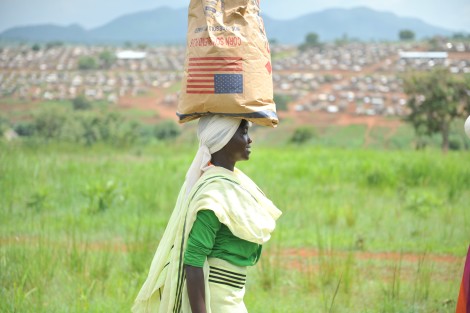-
Measuring Up: USAID Proposes New Indicators to Assess Countries’ “Journey to Self-Reliance”
July 3, 2018 By Olivia Smith
“At the heart of…USAID’s transformation, is the core belief that each country must lead its development journey, and finance and implement solutions to its development challenges,” said Susan Fine of USAID at a recent Center for Global Development event introducing USAID’s new “Journey to Self-Reliance ” indicators.
“The ultimate goal of foreign assistance must be to work toward the day when foreign assistance is no longer necessary, and we must measure our work by how far every investment moves us closer to that day,” said Fine, who is Acting Assistant to the Administrator of USAID’s Bureau for Policy, Planning, and Learning. USAID’s new metrics-driven approach to development seeks to ensure that “what we do in each of our countries is ultimately strengthening its ability to plan, finance, and implement solutions to solve its own challenges,” said Chris Maloney, the Deputy Coordinator of USAID’s Transformation Task Team.
USAID proposes a set of 17 indicators to measure the development capacity and commitment of each country it assists, which will be tracked on country “Roadmaps” or self-reliance profiles. The Roadmaps, due for release in the fall, will “create a transparent rubric” for development partnerships, so that “the way we define our relationships is truly focused on this idea of self-reliance,” explained Maloney.
USAID’s new indicators and Roadmaps build on other data-driven development strategies, such as the Millennium Challenge Corporation’s country scorecards. But unlike MCC, USAID’s indicators will be mainly used for planning, not to determine eligibility.
“Using data is always preferable to relying on assumptions,” said Sarah Rose of the Center for Global Development. However, “no set of cross-country indicators is ever going to provide a complete picture or be able to fully answer everything you need to know about development.” The challenge lies in “ensuring that everyone who uses this tool…also utilizes it with a keen focus on some of the limitations as well,” said Rose.
“USAID ought to be very careful about tunnel vision,” said Bradley Parks, Executive Director of AidData, because these indicators “are indirect, imperfect proxies of countries’ progress toward self-reliance.” In addition, without guidance on how to use the indicators, “government effort can be misdirected in inefficient or distortionary ways,” he said. For example, hoping to improve its ranking on MCC’s corruption indicators, one African government plastered cities with anti-corruption billboards to try to influence the perception of corruption, said Bradley, rather than the reality.
The indicators and Roadmaps are a work in progress, said Fine and Maloney, and USAID will continue to refine them in collaboration with country partners and the State Department. Send your input and comments to open@usaid.gov.
Read More:
- What are the most important factors in the Failed States Index? Schuyler Null and Carolyn Lamere assess the methodology and indicators behind this critical dataset.
- Measuring community resilience could help enable smarter development investments and reduce financial losses due to natural disasters, writes Molly Jones.
- Maternal health experts discuss flaws in maternal health indicators and strategies for improving evaluation methods.
Sources: Center for Global Development, Millennium Challenge Corporation, USAID
Photo Credit: Woman receiving USAID commodities at Bambasi refugee camp, June 2013, courtesy of Kiyori Ueno
Topics: Africa, data, democracy and governance, development, economics, featured, humanitarian, On the Beat, USAID
 A Publication of the Stimson Center.
A Publication of the Stimson Center.






